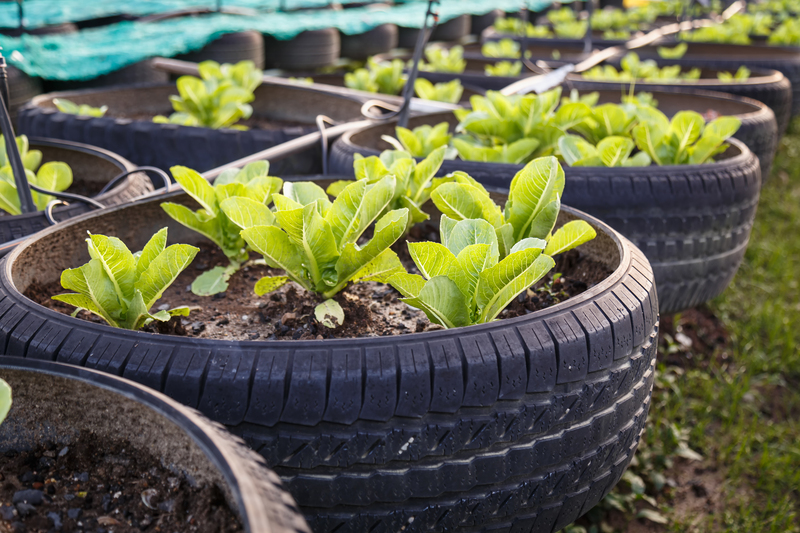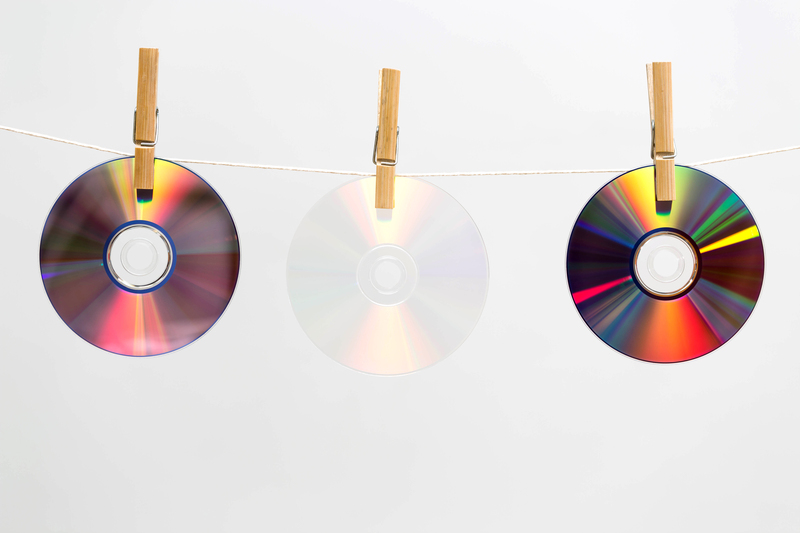Eco-Friendly Solutions for Pots and Pans You No Longer Need
If you've upgraded your kitchen cookware or discovered a forgotten collection of battered pans, you might be wondering how to get rid of these items without hurting the environment. Disposing of unwanted pots and pans can pose a challenge, but with a bit of creativity and eco-conscious thinking, you can keep them out of the landfill. Here, we'll explore a host of eco-friendly solutions for pots and pans you no longer need. Whether your cookware is made from stainless steel, aluminum, cast iron, nonstick materials, or copper, there are sustainable options for reuse, recycling, and upcycling.
Understanding the Environmental Impact of Disposing Cookware
Many types of cookware--especially nonstick or mixed-material pans--can sit for decades in landfills without breaking down. Metals like aluminum and stainless steel are highly recyclable, but nonstick coatings can complicate matters. Before simply throwing your old pots and pans into the trash, it's important to consider their environmental footprint, as well as alternative methods for eco-friendly cookware disposal.
- Metal waste contributes to landfill overflow.
- Plastic handles and chemical coatings can release harmful toxins.
- Resources are consumed to produce new cookware--reuse extends life cycles.
By pursuing sustainable solutions, you'll be helping reduce waste, save energy, and conserve valuable resources.

How to Identify the Material of Your Unwanted Pots and Pans
Before choosing an eco-friendly solution for your old pots and pans, it's wise to identify what they're made of. This can influence disposal, donation, recycling, or upcycling possibilities.
- Stainless steel: Shiny, magnetic, rust-resistant. Often recyclable.
- Aluminum: Lightweight, non-magnetic, sometimes anodized. Usually recyclable.
- Cast iron: Heavy, magnetic, can rust if uncoated. Highly reusable and recyclable.
- Copper: Reddish-brown, excellent conductor. Sometimes recyclable, valuable for crafts.
- Nonstick/Teflon: Black, smooth coating. Less commonly accepted in standard recycling systems.
By knowing the base material, you'll make a more informed decision on sustainable disposal practices.
Eco-Friendly Donation and Reuse Options
1. Donate Pots and Pans to Charities and Thrift Stores
One of the most eco-friendly ways to dispose of unwanted cookware is to donate it to individuals or organizations in need. Many charities, thrift stores, soup kitchens, shelters, and community organizations gladly accept gently used kitchenware. Before donating, ensure that your items are clean, safe, and in usable condition.
- Check with local non-profits for accepted items.
- Contact community kitchens and shelters, which often help people set up new homes.
- List items on Freecycle, Buy Nothing groups, or local online forums to give them directly to neighbors in need.
2. Garage Sales and Online Marketplaces
If your pots and pans are in decent shape, consider rehoming them through a garage sale or by listing them on platforms such as Facebook Marketplace, Craigslist, or eBay. One person's old frying pan may be another's starter cooking tool. This approach extends the life of your cookware and reduces waste.
3. Hand Down to Friends or Family
Young adults leaving home for the first time, college students, and hobbyist cooks may appreciate hand-me-down cookware. It's a practical, low-waste solution that saves money and resources.
Creative Upcycling Ideas for Old Pots and Pans
When cookware is too worn for the kitchen, consider giving it a second life through upcycling. Channel your creativity and transform old pans into useful or decorative objects.
1. Turn Cookware into Planters
Old pots and pans make fantastic plant containers for your garden, balcony, or home. Simply drill a few drainage holes in the bottom, add soil, and plant herbs, flowers, or succulents. Cast iron skillets, stainless steel saucepans, or vintage copper pots can add style and personality to your garden.
- Add a rustic touch by leaving the handles attached.
- Use shallow pans for succulents or cacti.
- Hang saucepans or colanders for creative vertical gardens.
2. Garden Art and Bird Feeders
Old frying pans or lids can be turned into bird feeders, wind chimes, or garden art. Paint them, string them up, or stack them for whimsical outdoor sculptures. This method reuses metal while beautifying your space.
3. Organizational Helpers
Skillets and pans with deep sides make excellent organizers. Use them in the garage or shed for holding tools, screws, or spare keys. In the craft room, they're ideal for keeping supplies tidy. Upcycling for organization extends the functional life of your cookware far past its cooking days!
Recycling Old Pots and Pans Responsibly
If your used cookware cannot be reused or upcycled, recycling is another eco-conscious solution for unwanted pots and pans. However, the process depends on both material and local facilities.
1. Metal-Specific Recycling
Most metal cookware is recyclable, including aluminum, stainless steel, cast iron, and copper. Separate out any plastic, wood, or rubber handles first. Then, locate a local scrap metal recycling center or municipal recycling facility that accepts cookware. Never put pots and pans directly in curbside recycling unless specifically allowed, as mixed materials may not be accepted.
- Check city guidelines for recycling scrap metal.
- Remove non-metal parts to improve acceptance.
- Some centers pay for valuable metals like copper or aluminum.
2. Special Consideration for Nonstick Cookware
Nonstick or Teflon-coated pans are challenging to recycle. The coating contains chemicals that hinder standard metal recycling processes. Here's what you can do:
- Contact manufacturers--some offer take-back or recycling programs.
- Inquire with waste management providers about special disposal days for hard-to-recycle items.
- Check with local hazardous waste facilities if unsure.
If no recycling options exist, use nonstick pans for non-cooking upcycles, such as tool trays or craft organizers, to extend their usefulness.
Manufacturer and Retailer Take-Back Programs
Some cookware brands and retailers offer sustainable cookware recycling programs to help customers dispose of old items responsibly. These can be especially helpful for reclaiming hard-to-recycle pans.
- TerraCycle partners with brands to recycle kitchenware and small appliances.
- Kitchenware brands like Calphalon and certain department stores occasionally run trade-in events or recycling drives--check brand websites for details.
- Induction cookware upgrades: Some retailers accept old cookware when customers buy a full new set.
Participating in a take-back or recycling program ensures your pots and pans are handled in an environmentally friendly way.
Tips for Maintaining and Extending the Life of Your Cookware
The greenest solution is always to maximize the usable life of your kitchen items. Here are a few ways to reduce the need for disposal, promoting a more sustainable kitchen:
- Regular cleaning: Promptly wash and thoroughly dry cookware after each use.
- Gentle utensils: Use wood or silicone tools with nonstick pans to prevent damaging the coating.
- Proper storage: Stack pans with protective pads or hang on hooks to avoid scratches and chips.
- Reseasoning cast iron: Treat periodically with oil and heat to prevent rust and prolong lifespan.
- Repair where possible: Replace screws or handles rather than discarding the whole item.
By caring for your cookware, you'll minimize turnover and enjoy sustainable kitchen habits for years to come.
Frequently Asked Questions: Sustainable Cookware Disposal
What should I do before donating or recycling old pots and pans?
Thoroughly clean your pots and pans, paying special attention to removing any food residue or grease. Remove non-metal parts if required by your local recycling center.
Can all cookware be recycled?
No. Most metal pans can be recycled, but items with chemical coatings, wooden/plastic components, or mixed materials may be rejected. Nonstick pans are particularly problematic; always check with the recycling provider.
Are there national programs for recycling cookware?
Some regions offer specialty recycling events or partnerships with brands for cookware disposal. TerraCycle and certain charities can help, but most recycling is handled locally at scrap metal facilities.
How can I reuse pans with damaged coatings?
Repurpose them for craft storage, planters, or as serving trays for non-food items. If safe, sand off the coating and use as a rustic metal container.

Summary: Making the Sustainable Choice with Old Cookware
When you're ready to part with your pots and pans, taking an eco-friendly approach is easier than you think. Donate usable cookware, upcycle creative pieces for home and garden, and recycle responsibly whenever possible. By staying mindful of material types and local regulations, you'll keep harmful waste out of landfills and reduce your environmental impact. The next time you sort your kitchen drawers, remember these eco-friendly solutions for cookware you no longer need--your home, your community, and the planet will thank you!
Bonus: Additional Resources for Eco-Friendly Kitchenware Management
- TerraCycle: Solutions for hard-to-recycle kitchenware and more.
- Freecycle: Exchange unwanted cookware within your community.
- Call2Recycle: Recycling guidance for metal and specialty items.
- Check with your local government's waste management site for specific recycling guidelines.
With conscious choices, each of us can reduce kitchen waste and champion sustainability--one pot or pan at a time.
